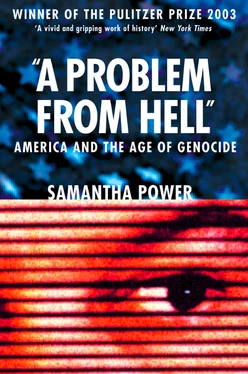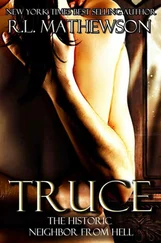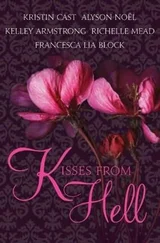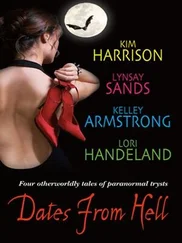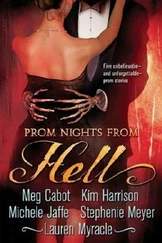Confused, Quinn hand-wrote a description of the scene, stuffed it into an envelope, and put it on the plane that flew to the nearest U.S. consular headquarters, where it was typed up and sent back to the United States as a spot report. He also set out to learn more about Cambodia’s internal divisions. In the subsequent weeks he interviewed dozens of Cambodian refugees who had fled to Vietnam, including a former KR official. The refugees described such brutality and the visual image of the burning horizon was so memorable that Quinn had what he calls a “eureka moment.” He concluded that although the Khmer Rouge may have been wellbehaved “boy scout revolutionaries” when they began their military campaign in 1970, in June 1973 they had launched a far more radical program designed to communalize the entire Cambodian society overnight. The KR were deporting people from their ancestral homes to new communes and were burning the old villages to enforce the policy.
In February 1974 he sent to Washington a forty-five-page classified report, “The Khmer Krahom [Rouge] Program to Create a Communist Society in Southern Cambodia.” Quinn wrote: “The Khmer Krahom’s programs have much in common with those of totalitarian regimes in Nazi Germany and the Soviet Union, particularly regarding efforts to psychologically reconstruct individual members of society.” He described KR attacks on religion and on parental and monastic authority as well as the widespread use of terror. “Usually people are arrested and simply never show up again, or are given six months in jail and then die there,” he reported. The “crimes” that “merited” this treatment were fleeing KR territory and questioning KR policies. 21Today Quinn’s voice still betrays shock at the bloodiness of the KR approach to social transformation: “They were forcing everybody to leave their homes and build new collectivized living communities. They were setting fires to everything the people owned so they would have nothing to go back to. They were separating children from parents, defrocking monks, killing those who disobeyed and creating an irrevocable living arrangement.”
Quinn’s reporting stood out from that of his State Department colleagues because at that time U.S. government officials rarely interviewed refugees. Instead they relied almost exclusively on official, government-to-government sources. But Quinn also urged his superiors to begin distinguishing between Communists in Cambodia and those in Vietnam. Vietnam had certainly supplied the KR with weapons, military advisers, and direct combat and logistical help in the past, but the two groups had begun to feud. Quinn sent detailed accounts of the KR’s purge of Vietnamese civilians from Cambodia and their disruption of Vietnamese supply lines. Quinn’s analysis was at complete odds with the prevailing view in Washington, which held that the Khmer Rouge were simply an extension of the North Vietnamese and the Vietcong. Quinn’s reports were never heeded. Quinn recalls his rude awakening:
It was of course disappointing to me. I was young and didn’t know how government worked. I thought I would write this huge report and everybody would read it, but it was just another piece of paper. When I got back to Washington, people were still analyzing Cambodia in the old way, as if it were run by Hanoi. People would hear me out, and then just say, “Yeah, but…”
Although the American press, too, occasionally mentioned “infighting” among the different Communist “factions,” the myth of monolithic communism died hard. U.S. involvement in Cambodia was justifiable because the various Communist forces were joined in revolution. The KR rebels had shrouded their leadership in a thick cloak of mystery, and Quinn’s hilltop survey was not going to sway Americans who assumed all Communists were in cahoots.
But others were beginning to stop lumping the two neighbors together. Elizabeth Becker became a “stringer” for the Washington Post in 1972. She was twenty-five when she arrived, and with her short blond hair, petite frame, and unending inquisitiveness, she might have been mistaken for a teenager. Most of the eager young correspondents had flocked to neighboring Vietnam to make their professional fortunes, but Becker had chosen to cover Cambodia, the sideshow. Permanently based in Phnom Penh, she did not depart for mini-sabbaticals or alternate assignments. Unlike her more senior, established colleagues, she lived among the Cambodian people and was thus better positioned to pick up stray gossip.
By the time Becker arrived in Cambodia, only 25,000 U.S. troops were left in Vietnam, and U.S. correspondents from the major news outlets were heading home. Initially, Becker joined her other American colleagues in defining the rebels according to the regime they opposed (as “anti–Lon Nol insurgents”) or by the generic ideology they pursued (“Cambodian Communists” or “indigenous Communist rebels,” to distinguish them from the North Vietnamese rebels who were presumed to direct them). The reporters used shorthand references that gave no hint of the aims or the character of the revolutionary force.
In early 1974, around the time Quinn was circulating his detailed report, Becker had begun to notice that Cambodians in Phnom Penh were becoming increasingly alarmed by what they learned about the mysterious rebels storming across Cambodia. The KR already occupied 85 percent of the country, and they seemed certain to take the rest. Becker saw that pedicab drivers, riverboat captains, and politicians alike were devouring the contents of a small book distinguishable by its cover, which depicted Cambodia shaped like a heart torn in two by the Mekong River. The book, Regrets of the Khmer Soul, was the published diary of Ith Sarin, a former Phnom Penh schoolteacher who had traveled through KR territory for nine months in 1972 and 1973, interviewing KR soldiers and peasants. Becker and Ishiyama Koki, a Japanese friend and colleague, paid to have Sarin’s diary translated. Becker thought it time to ask a question that no American reporter to date had posed. She wrote a story for the Post entitled “Who Are the Khmer Rouge?” and answered the question in a way that few afterward would believe.
Becker’s long feature, to which the Post gave a full-page spread in March 1974, drew heavily on Cambodian government and Western diplomatic sources, as well as Ith Sarin’s diary. In her exposée, Becker quoted Sarin’s description of the KR’s appealing discipline and daunting severity. “I paid attention to the great help the Khmer Rouge gave to the people; building dikes, harvesting crops, building houses and digging bunkers,” Sarin noted. “I also saw them force all people to wear black clothes, forbid idle chatter and severely punish any violations of their orders.” 22
Becker also quoted Cambodians who had defected from KR zones to the dwindling patch of territory controlled by the government. Becker’s article was the first to mention Pol Pot, who was then still known by his given name of Saloth Sar. It was the first to note that relations between the KR and the Vietnamese Communists were strained. And it was the first to describe the cruelty of KR rule.
But if Becker depicted life under the KR as spartan, she did not depict it as savage. And if she described their rule as clinically disciplined, they did not come across as criminally disposed. In places Becker herself seemed taken with the egalitarian premises of the organization, which attracted Cambodians and foreigners alike. When the disreputable Lon Nol government captured KR women soldiers, Becker wrote, the government generals were appalled by the women’s self-possession. Becker quoted one diplomat as saying, “They complained of the audacity of these virgins who had the nerve to look a man straight in the eye and who didn’t shuffle their feet demurely like good women.” Becker did not suggest that life under KR rule would be fun. But she also did not imply that life would not be permitted. 23
Читать дальше
